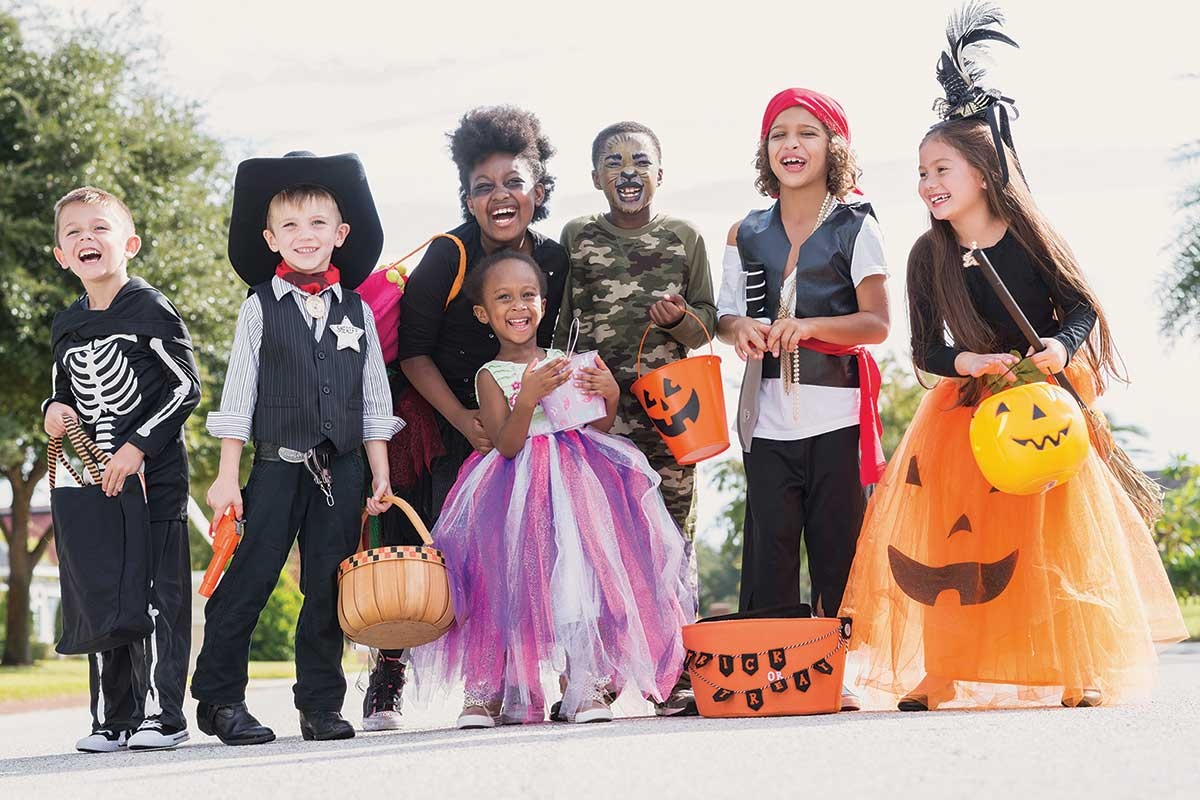No holiday can match the fun of trick-or-treating and costume parties on Halloween. But the holiday brings with it potential hazards, including food-related illnesses, allergic reactions to costumes and makeup, and tragedies such as child pedestrian fatalities.
To make sure treats are safe for children, follow these simple steps for food safety from the U.S. Food and Drug Administration.
Snacking. Children shouldn’t snack on treats from their goody bags while they’re out trick-or-treating. Give them a light meal or snack before they head out; don’t send them out on an empty stomach. Urge kids to wait until they get home and to let you inspect their treats before they eat any of them.
Safe treats. Tell children not to accept—and especially not to eat—anything that isn’t commercially wrapped. Inspect all treats for signs of tampering, such as an unusual appearance or discoloration, tiny pinholes, or tears in wrappers. Throw away anything that looks suspicious.
Food allergies. If your child has a food allergy, check the label of each treat to ensure the allergen isn’t present. Don’t allow children to eat any home-baked goods they receive.
Choking hazards. If you have very young children, be sure to remove any choking hazards such as gum, nuts, hard candies and small toys.
If your idea of Halloween fun is a party at home, don’t forget these additional tips from the FDA:
- Beware of cider! Unpasteurized juice or cider can contain harmful bacteria such as salmonella. To stay safe, always serve pasteurized products.
- No matter how tempting, don’t taste raw cookie dough or cake batter that contains uncooked eggs.
- “Scare” bacteria away by keeping all perishable foods chilled until serving time. Bacteria will creep up on you if you let foods sit out too long. Don’t leave perishable goodies out of the fridge for more than two hours.
When trick-or-treating, remember to use extra caution as you go door to door. Halloween and New Year’s Day are the two deadliest days of the year for child pedestrians, according to the Children’s Safety Network. For safe trick-or-treating, remember to:
- Wear costumes that are fireproof and include reflectors and bright colors.
- Take flashlights or glow sticks to increase visibility.
- Have an adult accompany children, especially those under 12.
- Always cross streets at intersections using traffic signals, where possible, and crosswalks.
- Look left, right, then left again when crossing the street, and make eye contact with drivers to make sure they see you.
- Beware of cars backing out of driveways.
- Only visit well-lit homes. A home with the lights off is an indication that the resident does not want trick-or-treaters.
Dressing up is part of the Halloween fun, but when choosing clothes, accessories and makeup, take these precautions:
- Avoid trips and falls by making sure costumes and shoes fit well and that accessories like swords and knives are soft and won’t drag the ground.
- Opt for makeup over masks, which can obscure vision. But test makeup in a small area first to monitor the skin’s reaction, and be sure to remove makeup before bed to prevent irritation from developing overnight.


